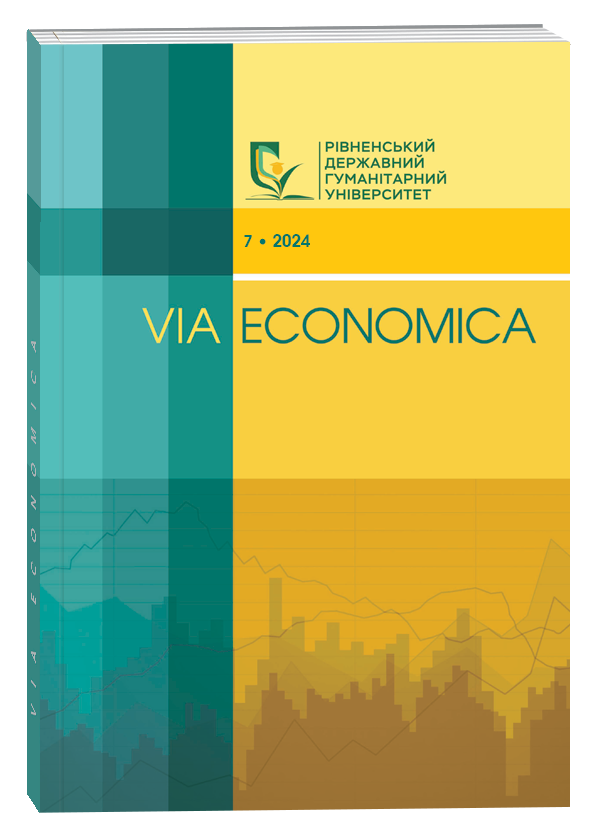CAUSES AND CONSEQUENCES OF FORCED MIGRATION OF EDUCATORS AND YOUTH STUDENTS
Abstract
The article is devoted to the analysis of the causes and consequences of the forced migration of educators and students, which occurs in the context of socio-economic crises, full-scale military aggression by the Russian Federation against Ukraine, political repression, and ineffective education system reforms. A graph showing the dynamics of changes in the volume of student youth departure from Ukraine for 2018–2024 has been constructed, with a reflection of the main factors affecting migration processes. Thus, during 2018–2022, there is a steady increase in the number of students going abroad. In 2023–2024, a further increase in this number is predicted, which corresponds to the trends of the past years. In 2022, there was a significant increase in the share of students leaving due to the socio-economic and political crisis. This trend remained significant in 2023 and 2024, as the political situation in the country remained unstable. A diagram of the dynamics of the migration of educators for the period 2020–2024 was constructed, based on five main determinants: the economic sphere, political situation, better working conditions in EU countries, the development of academic mobility, and personal factors. Thus, political factors have become the main reason for migration since 2022, and their influence has continuously increased, reaching 70% in 2024. The percentage of migration due to economic difficulties increased from 45% in 2022 to 55% in 2024, owing to the economic crisis caused by the war and inflation. A regression analysis was carried out to investigate how changes in the level of migration of students and teachers (using the number of migrants as an example) can affect economic indicators (such as GDP per capita). The results of the regression analysis indicate a negative correlation between the number of migrating students and teachers and the economic development of Ukraine. Thus, migration causes the loss of human capital, which has a direct impact on the development of the national economy. The results of the study will be useful for the development of policies aimed at supporting educators and students who were forced to emigrate, improving the higher education system, adapting programs to new realities, and developing international educational initiatives.
References
Fedorenkov A. Cultural Exchange and Its Impact on Student Mobility in Ukraine. Journal of Cross-Cultural Studies. 2022. № 8. P. 112–130.
Rohovska L. The Political Dimensions of Educational Migration in Eastern Europe. Central European Journal of Migration Studies. 2021. № 5. P. 78–95.
UNHCR. Ukraine refugee response: Migration trends and their impact on education. URL: https://www.unhcr.org/ (дата звернення: 29.11.2024).
World Bank. Ukraine Economic Update. Washington D.C.: World Bank Group. URL: https://www.worldbank.org/ (дата звернення: 29.11.2024).
Борщевський В. В., Розгон А. І. Соціально-економічні наслідки міграції для України. Економіка України. 2020. № 3. P. 45–54.
Державна служба статистики України. Міграція населення України: Звіт за 2022 рік. URL: http://www.ukrstat.gov.ua (дата звернення: 29.11.2024).
Євростат. Education statistics: Migration patterns in Europe. URL: https://ec.europa.eu/eurostat (дата звернення: 29.11.2024).
Інститут міжнародної освіти (IIE). Open Doors Report on International Educational Exchange. URL: https://www.iie.org/ (дата звернення: 29.11.2024).
Міжнародна організація з міграції (IOM). Міжнародна міграція студентів: Тенденції та прогнози. URL: https://www.iom.int (дата звернення: 29.11.2024).
Міністерство освіти і науки України (МОН). Мобільність студентів та викладачів в Україні та за кордоном: актуальні дані. URL: https://mon.gov.ua/ (дата звернення: 29.11.2024).
ЮНЕСКО Інститут статистики (UIS). Студентська міграція: Глобальний огляд. URL: http://uis.unesco.org (дата звернення: 29.11.2024).
UNESCO (2022). Migration of academic staff in conflict regions: The Ukrainian context. URL: https://en.unesco.org/ (дата звернення: 29.11.2024).
Fedorenkov A. (2022). Cultural exchange and its impact on student mobility in Ukraine. Journal of Cross-Cultural Studies, no. 8, pp. 112–130.
Rohovska, L. (2021). The political dimensions of educational migration in Eastern Europe. Central European Journal of Migration Studies, no. 5, pp. 78–95.
UNHCR. Ukraine refugee response: Migration trends and their impact on education. Available at: https://www.unhcr.org (accessed November 29, 2024).
World Bank. Ukraine economic update. Washington, D.C.: World Bank Group. Available at: https://www.worldbank.org (accessed November 29, 2024).
Borschevsky V. V., Rozgon A. I. (2020). Sotsialʹno-ekonomichni naslidky mihratsiyi dlya Ukrayiny [Socio-economic consequences of migration for Ukraine]. Ekonomika Ukrayiny – Economy of Ukraine, no. 3, pp. 45–54.
Derzhavna sluzhba statystyky Ukrayiny. Mihratsiya naselennya Ukrayiny: Zvit za 2022 rik [State Statistics Service of Ukraine. Population migration of Ukraine: Report for 2022]. Available at: http://www.ukrstat.gov.ua (accessed November 29, 2024).
Eurostat. Education statistics: Migration patterns in Europe. Available at: https://ec.europa.eu/eurostat (accessed November 29, 2024).
Institute of International Education (IIE). Open doors report on international educational exchange. Available at: https://www.iie.org (accessed November 29, 2024).
International Organization for Migration (IOM). International student migration: Trends and forecasts. Available at: https://www.iom.int (accessed November 29, 2024).
Ministerstvo osvity i nauky Ukrayiny. Mobilʹnistʹ studentiv ta vykladachiv v Ukrayini ta za kordonom: Aktualʹni dani. [Ministry of Education and Science of Ukraine. Mobility of students and teachers in Ukraine and abroad: Current data]. Available at: https://mon.gov.ua (accessed November 29, 2024).
UNESCO Institute for Statistics (UIS). Student migration: A global overview. Available at: http://uis.unesco.org (accessed November 29, 2024).
UNESCO. Migration of academic staff in conflict regions: The Ukrainian context. Available at: https://en.unesco.org (accessed November 29, 2024).


